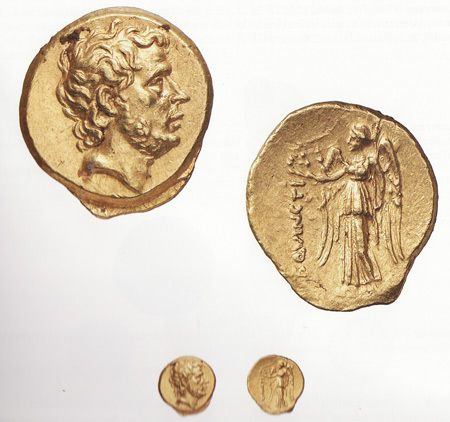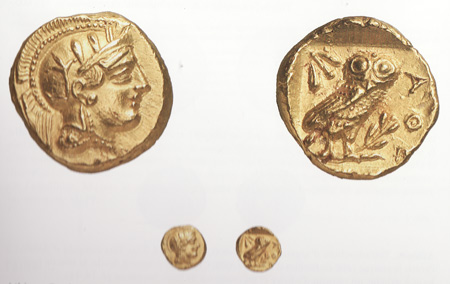THE CHRONICLE
The second foundation
THE ULTIMATE GOAL, THE WHY
The scope of the second foundation is to enhance the creativity and cultural level of the ordinary, and to gain the respect and recognition by great experts.
The scope of the foundation is also to infuse enthusiasm and a deep understanding of arts, science and history to people of all conditions and level. It is to say to those who possess the genuine will to progress in the knowledge of human thinking at its highest level. Such will is rare, because most of humans in our consumable and distraction era are passive. It's why we must severely limit the number of visitors, accordingly with the restricted space of the second foundation. On the other hand, they can see and appreciate in a very intimate and convivial way, the exhibited items.
THE ULTIMATE GOAL, THE HOW
The structure of the second foundation is similar to that of the Uccle foundation in Belgium. (Fondation Lussato - Fédier). It consists in a network rather labyrinthic comprising two kind of elements : the lines (or strings) and the nodes.
THE LINES
The items are distributed in sequential paths. For exemple in the Second Foundation, all the coins belong to different epochs and geographic areas, when in most the collections they are gathered in specialities such as greek or byzantine pieces. This is necessary as we do not have the funds to encompass the whole range of the matrix time-space of the monetary production. Keeping this exemple in mind, we could consider the diachronic order who distributes coins from 550 BC to the Euro, like a convénient time scale. All the historical and artistic-scientific events can be illustrated by a corresponding coin emission. But there is another way to decode the coin diachronic line, which is much more interesting. It can perfectly explain the terrific crisis which is at his beginning. It is more than a metaphora : it represents directly, without any cosmetic artifice to cover the financial civil servant tracks.
In the second foundation the lines are complementary to those of the Uccle foundation. They are brain-oriented, i:e they deal with evolution of thinking in art, science, philosophy and history. The paper and the ink are the major vehicles to convey communications. We will collect all which is related to the writing, personal and collective. These lines are : calligraphy, paper museum of Tokyo, manuscript books, first incunables and first editions of the major events, evolution of binding from the middle age to modern artists.
THE NODES
A node is a concentration of items of a single specialty, which aims to completeness. The scope of the node, is to gain reputation to both experts and scholars and to laymen. A node must rivalise with the most prestigious institutions and to encourage men of even remote countries to visit the foundation. An exemple of node in the first foundation, is the Mingei, popular craftmanship ancient and modern. Now we assist in Paris to a plethora of exhibitions on Mingei. But these pieces come from Japan and The States. When these interesting exhibitions will come to an end, there will be no one single place to admire masterpieces and litterature about Mingei ... except in the Uccle Foundation. It is what marketing people calls a niche. Such niches will permit the foundation to developp nodes, which otherwise would be too expensive.
At the present time it is yet difficult to fix our nodes without the cooperation and support of our sponsors. Nevertheless we can make suggestions, after an extensive view on the market. Even though Marina Fedier is in charge of the selection and purchases of works of arts, in the second foundation Bruno Lussato will be incharge of this function. His knowledge justify this responsability and he must have carte blanche in the limits of a declared program. The nodes could be :
- Bindings from middle ages to modern epoch.
- Masterpieces of monetary historical and aesthetic value
- First editions, from Copernicus to Einstein, from Dante to Pouchkine. They cover the following sections :
- Science and mathematics
- Discoveries and travels
- Medecine
- Philosophy
- Litterature and poetry.
Bruno Lussato began three nodes :
- Grolier, Mayeu and two other very rare and important books. (Binding)
- Divina commedia (litterature)
- Evainetos decadrachm of Syracuse. (Numismatics).
The items acquired are for the most rarity and reputation among experts. The ordinary people is amazed to see such masterpieces. T.M. of the first foundation wanted to seize one of the books of hours for her foundation although it fits better in the second.
SOME IMAGES

See above one of the first purchases, one of the most celebrated books since five hundred years and a honour to possess one for a public library. To get three Grolier, is an exceptionnal challenge.

An exemple of book of hours. Our is considerably older and better.

Our specimen of the most beautiful coin in the world. It is not rare but most of the experts declare than they never have seen a coin with so large a "flan" and absolutely complete. The speculators neglected it because it was not rare.
THE COST SIDE
The main working tool of the second foundation is the collection of objects.
The "small foundation" will cost about the same price than the UCCLE Foundation, but the maintenance costs are like these seismic building conceived to resist to the earthquakes. The second foundation is built schock -proof thanks its very low salaries and no staff. Only an animator is necessary and there is no use to get an expert. If there is a war or some disaster, the foundation can enkyst and sleep like a kind of hibernation. These features are very important for a foundation who must live for centuries. All the dividend shares from the capital bequeathed by the founder, can vanish suddenly. It is not the place in such an introduction to detail the organization planned by Bruno Lussato. It is rather complex but don't forget that his job is professor of efficiency work and oriented toward the drastic cut of the non-necessary costs.
The foundation owns the property on its patrimony and it is not entitled to lend items from other institutions and/or private collectors. As opposed to this rule, it is permitted to lend its isolated items, and even a large part of the collections to other institutions, but on three essential conditions :
- the safety of collections are controlled and ensured ,
- the borrower is a public or a wellknown institution, prestigious and of international fame,
- in return, the borrower should mention the provenance of the items and make the promotion of the association.
THE PURCHASE STRATEGY
An increasing success of the works of art, contradict those who wait that a collapse will permit them to pay considerably less the masterpieces. The contradiction comes from the fact that the Art market is very different of the other good capital. But we must take care, because a lot of investors want only make good benefits and could be disappointed when value drops. They would sell their collections and destabilize the whole market. An other trap is to trust experts, who makes their own interest.
Bruno Lussato made an intensive study about the choice either to wait or to buy very quickly a piece of art. He discovered a main factor : the irreplaceability indicator, ii. It is based on a very simple observation : when an item is unique, it has no sense to wait that its price drops! It simply desappear from the market in case of crisis. On the contrary, when you have many exchangeable items for sale, you can always negociate. What we call exchangeable is about a trap. It is possible in fact that a piece would have many variations, and one of them could be "unique". But you are not entitled to declare it RRRR even if it is alone of its kind in the market, since it is exchangeable with other variations.
A very brilliant demonstration is the next sale in Zürich, where russian buyers have automatically sélected the true ii. avoiding the trap.
Of course the ii indicator is not the unique criterion. All the other demands must be fulfilled: the condition, the historical importance, the beauty. Here is an exemple of the coins selected by the buyers.

The most beautiful roman coin est. FS 400 000 3 EX+ 1. This one is by far the best. RRRR
 ; The most beautiful celtic coin. Est :FS 75 0000 10 ex. RRR
; The most beautiful celtic coin. Est :FS 75 0000 10 ex. RRR

Titus Quinctius Flamininus, gold stater, 196 BC. The first coin engraved with a living Roman. FS 200 000 4 (museums) + 6. RRR

The best gold coin with the celebrated Athena owl FS 400 000. 3 EX. (museums) + 1 (this one, the very best). RRRR
Two of these pieces are genuine ii and meet all the other demands : the Titus and the Athena owl in gold.
THE COMPARATIVE COST OF THE NODES